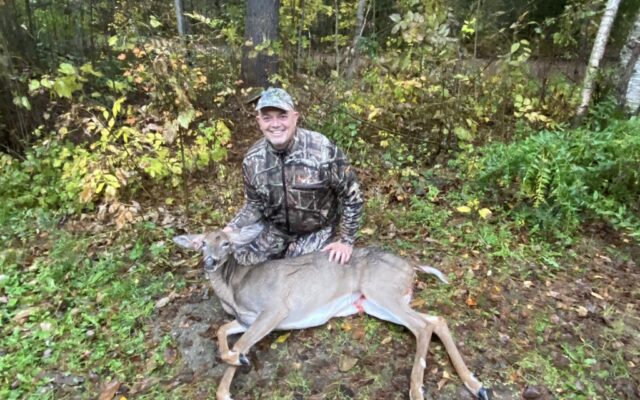
Are crossbows limiting archery participation and education in Maine?
By Susan Bard, Bangor Daily News Outdoors Editor
The Maine Bowhunters Association recently announced plans to shut down due to shrinking membership and participation, which it linked to growing popularity of crossbows in the state.
Maine’s crossbow laws have been a source of division for years, primarily due to a fundamental disagreement between traditional bowhunters and crossbow advocates about what constitutes legitimate archery hunting.
The association argued that including crossbows would compromise landowner relations and result in overharvest.
Proponents countered that combining the equipment would create additional hunting opportunities, boosting both hunter recruitment and the conservation funding that license sales generate for the Department of Inland Fisheries and Wildlife. Additionally, crossbow advocates point to the equipment’s accessibility for hunters with physical limitations. Wildlife managers also value crossbows as effective tools for population control in suburban and urban settings where firearms are restricted.
In 2024, Maine updated its archery licensing system, eliminating the need for a separate crossbow permit. A bowhunting license now covers both bow and arrow and crossbow usage, meaning hunters only need an archery license to hunt with either weapon.
The numbers show crossbow adoption: Of the 14,186 archery licenses sold last year to residents and nonresidents, hunters killed 4,851 deer with archery equipment during the expanded and regular seasons. Of those deer, 2,460 were harvested using a crossbow and 2,391 were harvested with a bow and arrow, according to Nathan Bieber of the Maine Department of Inland Fisheries and Wildlife.
Joe Saltalamachia killed his first deer in 1993 when fewer than 300 were taken statewide with archery equipment. For him, the shift to crossbows reflects both personal necessity and the sport’s evolution. The former archery purist and association member switched to crossbows after a severe shoulder injury prevented him from drawing his compound.
Beyond his personal situation, Saltalamachia points to broader structural issues that may discourage bow hunters. He notes the deer archery season dates as a barrier, and believes the lack of advocacy from an organized group has contributed to Maine’s current archery season structure. Earlier season dates and additional antlerless permits could help recruitment, he argues.
“Opening the season sooner would give people warmer weather, and attract young people and potentially even more women to the sport,” he said.”
The Maine Bowhunters Association’s closure represents more than just the end of one organization – it eliminates a potential source of education and mentorship that new hunters desperately need.
I discovered this resource gap firsthand when I entered the sport in 2023. I had been interested in pursuing archery hunting for quite some time. Since I struggle to stay warm during rifle season and prefer spot-and-stalk hunting over sitting in treestands, the warmer weather during bow season would eliminate that concern. The opportunity to hunt during the rut, particularly in western states, was another compelling reason to purchase a bow.
When I brought home a new Hoyt two years ago, I searched throughout the state for educational materials and programs that I could attend to boost my knowledge and skills. However, I didn’t find these resources – especially in rural Washington County, and instead sought out books and YouTube channels to learn all the lingo, tools and techniques. I even attended an intro to archery course via Zoom offered by another state’s game agency. Coyote Creek Archery, while an extremely far drive from home, was another valuable resource I took advantage of.
While Maine’s hunters debate crossbow acceptance, the challenge of supporting new archery hunters remains unaddressed.
The Maine Bowhunters Association said it would liquidate resources and direct that the Maine Youth Fish and Game Association receive support for its archery program. Although this ensures some educational continuity for young hunters, it leaves adult newcomers with few formal support systems.
Whether crossbows will continue to expand archery’s reach – or leave traditional bowhunters behind – remains to be seen. The real test may be whether Maine can develop the educational infrastructure that newcomers like me had difficulty finding. Without better guidance, the technical barriers to entry will remain steep regardless of what equipment hunters choose.